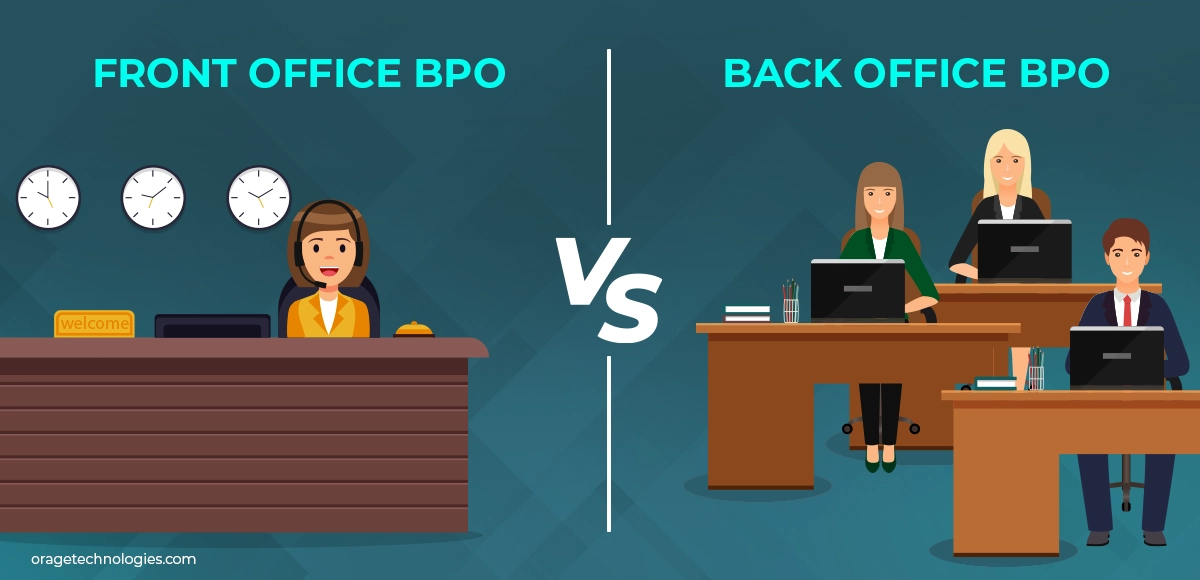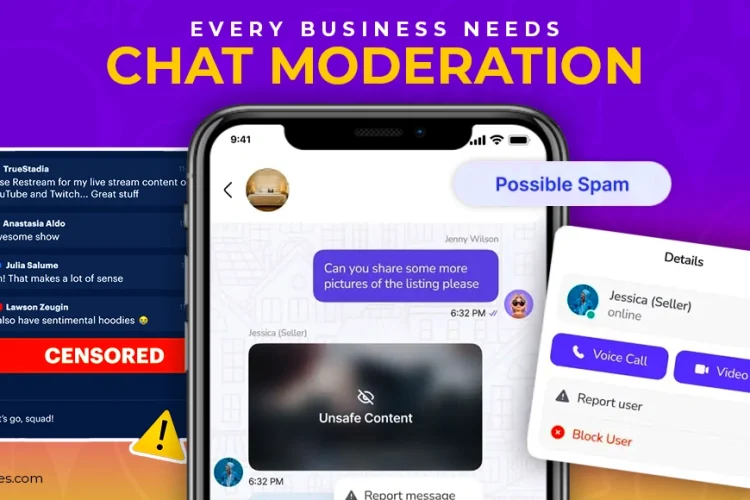
Arjun Seth has spent over 15 years working in the world of business, sales and operations. Having worked closely with teams at every level, he...
Does your organization hire third-party contractors or vendors to handle certain business processes? If your answer is yes, then congratulations, you know what BPO or Business Process Outsourcing is. The global BPO market is growing exponentially, achieving a huge leap in market value from $92.5 billion in 2019 to $232.32 billion in 2020. The post-pandemic world is all about the gig economy, side hustles, and remote and hybrid working environments. So, this means that you cannot ignore BPO. This is especially true for 80% of global executives who intend to sustain or increase spending on third-party outsourcing. But these companies are outsourcing for what business processes exactly? These processes fall under two main types: Front Office BPO and Back Office BPO. Let’s dive into understanding Front Office vs Back Office BPO.
Front Office BPO
Deloitte’s global outsourcing survey 2024 shows that 50% of executives outsource front office services. But what is Front Office BPO?
Think client or customer-facing business functions. When businesses outsource these operations, it is what we call front office BPO. These can include marketing, sales, tech support, customer service, and more that deal with customers directly.
The front office processes have a major impact on the organization’s revenue generation as well as reputation. So, to ensure high quality of these tasks and save on employee costs, businesses sometimes hire third-party vendors.
Marketing agencies, IT help desk service providers, sales enablement firms, and customer support providers are some of the third-party vendors that often handle the front office BPO for organizations.
What Front Office BPO Does
Before diving into front office vs back office BPO, let’s understand all the different outsourcing operations that can be categorized as front office BPO:
Customer service and support: Directly contacting customers on calls, emails, and texts. Answering their questions, addressing their complaints, and solving their problems.
Sales and lead generation: Reaching out to leads and convincing them to become loyal customers. This means higher conversion rates and more revenue.
Technical support and helpdesk: Helping the clients/customers with any technical problems. Troubleshooting to fix issues.
Telemarketing and telesales: Persuading customers to buy products or services on calls. Closing deals through calls.
Live chat and social media management: Building connections with customers. Addressing their concerns through social media channels.
Skills and Competencies Required
- Strong communication and interpersonal skill
- Language proficiency and cultural awareness
- Problem-solving abilities
- Sales acumen
- Emotional intelligence
Back Office BPO
Back office BPO refers to all of the non-client-facing processes that are usually a part of the internal business operations. This includes accounting, IT, supply chain, HR, and internal communications.
This area of outsourcing is seeing a shift as it is branching out into specialized areas. These can include IT services, legal process outsourcing, and knowledge process outsourcing.
Many businesses outsource paralegals, accountants, and technicians. Because their internal teams lack the technical know-how to handle certain business processes. Clutch’s 2023 report says that small businesses mainly outsource tasks to cut costs and tap into the expertise of industry professionals without hiring them full-time.
These behind-the-scenes services may not affect the revenue, but are vital in running a business smoothly and in understanding Front Office vs Back Office BPO
What Back Office BPO Does
Data entry and processing:
Keeping track of all of the company’s data and making sure it’s accurate, updated, and easily accessible by executives. The data can include anything from financial records to customer information.
Accounting and bookkeeping:
Managing the company’s finances. Handling invoices, payments, and balancing the books.
Human resources management:
Finding people to fill vacancies. Handling the hiring process, onboarding employees, and supporting them throughout.
Research and analytics:
Coming up with insights and trends. Using market research, competitor research, and data analytics to help the company make the right strategy.
Quality assurance and compliance: Making sure the products and services are of high quality and compliant.
IT support and maintenance:
In charge of the smooth running of the company’s technology. From fixing printers to software bugs.
Supply chain management:
Transporting goods, services, and information from suppliers to customers.
Skills and Competencies Required
- Technical expertise and specialized knowledge
- Attention to detail and accuracy
- Process optimization skills
- Analytical thinking
- Compliance and regulatory knowledge
Front Office vs Back Office BPO: What Makes Them Different
Customer Interaction
The biggest difference between the front office and the back office BPO is engaging with customers. Front Line BPO involves directly communicating with customers or clients. But the back office has almost no customer contact, since they are more behind the scenes.
A customer service agent will have to talk to customers to solve their issues and answer their queries. However, an accountant may never have to deal with customers, since they just have to manage the finances.
Revenue Impact
Another glaring difference is the impact on the organization’s revenue. Front office operations outsourcing will impact the conversions and, in turn, the revenue of the business. A marketing agency’s efforts can lead to higher sales for a company.
But the back office BPO does not have any immediate impact on the company’s revenue. IT support makes sure all your systems are running properly. So, it allows you to carry out your important business tasks.
Time Sensitivity
We know that front office BPO is customer-centric and affects revenue growth. So, the operations are much more time sensitive than back office BPO. Front office vendors have to respond to customers’ problems and inquiries in real time. Also, they must constantly answer to the executives about their efforts’ desired impact.
In contrast, back office BPO functions also follow flexible and process-driven timelines. These tasks prioritize accuracy and consistency over immediate outcomes. For example, a data entry provider may have a broader window to complete tasks. Meanwhile, a telemarketer must address a customer’s concern without delay.
Performance Metrics
A more tangible distinction of Front Office vs Back Office BPO is the metrics used to evaluate the performance. The results of front office BPO are measured by observing the customer satisfaction rate. Other metrics include response time rate and conversion rate.
Back office BPO, on the other hand, is measured by different standards. Here, success is about the accuracy of tasks done. How efficient is the processing, and how much money has been saved?
The Bottom Line: Front Office vs Back Office BPO
BPO or business process outsourcing can be highly beneficial to companies that want to save money but also get the best outcomes. Front office BPO brings your brand to life through customer-facing roles like sales, support, and marketing.
Meanwhile, back office BPO keeps your business running smoothly behind the scenes. It carries out important tasks like accounting, HR, and IT. It allows you to focus on things like boosting your revenue and profits.
Front office BPO and back office BPO both can be incredibly helpful in achieving the business goals, but in completely different ways. Your job is to analyze what business operations you should outsource, considering the talent and teams you already have.
Also Read: How to Detect Customer Hesitation Using AI and Turn It Into Sales

Arjun Seth has spent over 15 years working in the world of business, sales and operations. Having worked closely with teams at every level, he brings a real-world perspective to the challenges businesses face today. Over the years, he’s helped companies and startups across industries streamline processes, improve efficiency, and build stronger, more adaptable solutions. Through his writing, Arjun shares the lessons he’s learned along the way — the wins, the setbacks, and everything in between. His blogs aim to make business sales and operations easier to understand and apply, whether you're managing a team, leading a department, or setting the success of startups.
More Posts

